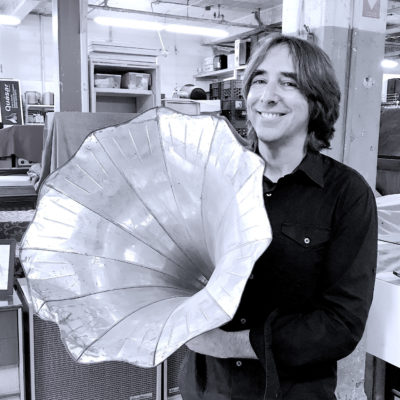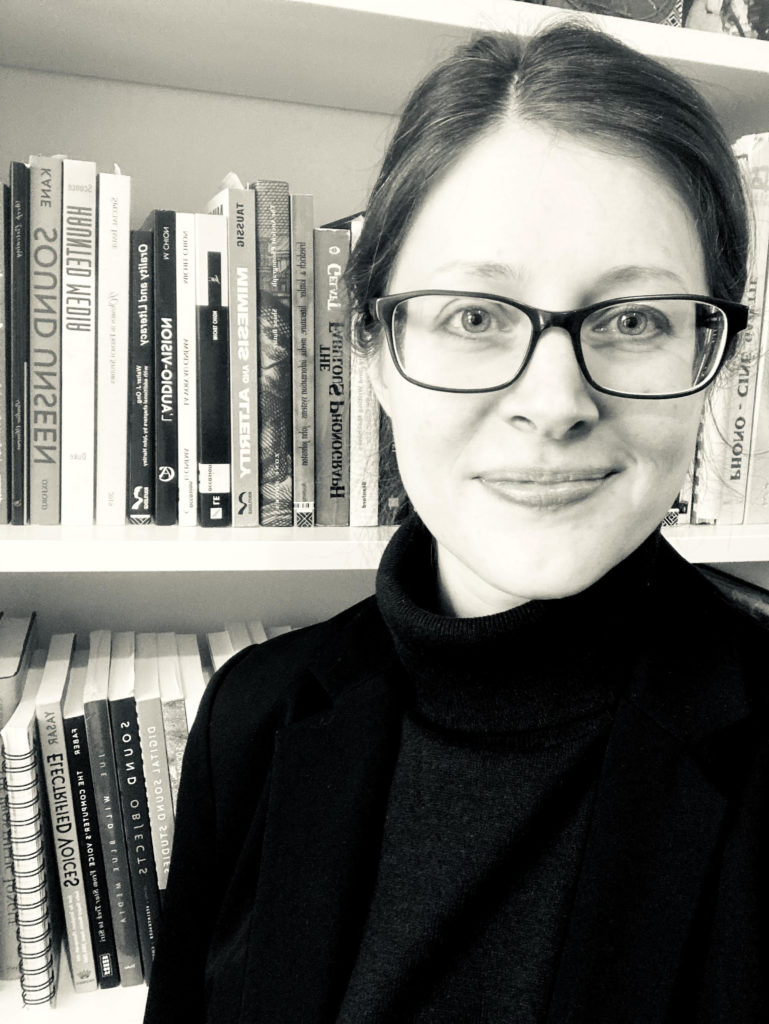
I was very excited to initiate a conversation with Renée Altergott because her research dovetails with my own in numerous ways. That said, my own research has focused on the history of early sound recording media technologies (and spoken recordings) in Anglo-American contexts, and Renée’s research explores this historical period of the medium in French and French colonial contexts, so I expected to learn a surprising thing or two from our discussion. And I did! I conducted the following interview with Renée Altergott about her research and wider interests in audio media and sound studies by email during the month of April, 2021.
Welcome to the “Listening, Sound, Agency Forum” on the SWB, Renée. My first question is about your current work. Your dissertation “Phonographic Imaginaries: The Birth of Sound Recording in France and the French Colonial Empire” falls squarely within media historical approaches to sound studies as they relate to literary history. But this project also pivots in a manner that provides refreshing historical accounts and perspectives, for example, by telling the history of sound recording in the context of French inventors like Charles Cros and Édouard-Léon Scott de Martinville, rather than via Edison (always Edison!), by focusing on early uses of the phonograph as a tool for colonization, and by attending to indigenous perspectives in the early uses of sound recording technologies. Can you tell us a little bit about this project, and especially about how you feel it brings something new to literary studies and to sound studies?
My work on sound and literature is heavily indebted to my Masters’ thesis advisor in France, Gérard Gengembre, who recommended that I read Alain Corbin’s Village Bells (Les cloches de la terre, 1994). I had a background in music composition, but had yet to explore the intersection of French literature and music in depth; after Corbin, everything I have read since has been through a sonic lens. My dissertation project finally clicked into place when I started researching what I thought was simply the background history of sound recording for my introduction – once I realized how much was left to say about the reception of the Edison phonograph in France, the debates over precedence for Scott de Martinville and Cros, and the reactions to disembodied voice, it became clear that I had the start of my first chapter. The timeliness of a project that is otherwise concerned with the earliest decades of the recording era (roughly 1877-1913) derives from the First Sounds team and their 2008 revival of Scott de Martinville’s voice from his phonautograms from 1860. If this discovery launched a new wave of texts reclaiming the origins of sound recording for France, I was surprised to learn that this was hardly the first time this had happened. To some extent, my work on French media history is also a study of technology through myths, apocryphal anecdotes, and alternative histories.
I find it intriguing that so many French-speaking thinkers have contributed major texts to the North American Sound Studies canon, yet Sound Studies has taken much longer to become established as a cohesive discipline in France. For example, Jonathan Sterne’s Sound Studies Reader (2012) includes foundational texts by Jacques Attali, Michel Chion, Frantz Fanon, Jacques Derrida, and Roland Barthes – ie, from widely varying disciplines and methodologies. The inaugural Sound Studies seminar at the Bibliothèque Nationale de France, led by Pascal Cordereix and Philippe Le Guern starting in January 2018, has drawn greater attention to exciting work on sound in France, such as Mylène Pardoen’s “acoustic archaeology,” Henri Chamoux’s archéophone machine that can read sound across cylinder formats, and Thomas Henry’s excavation of the former disquaires of Paris. One goal of my work is to build on this extremely rich corpus and make a case for a “French and Francophone Sound Studies” that celebrates these contributions and accounts for their impact on the discipline as a whole.
The other major focus of my thesis is the neglected political context of the Partition of Africa, and the ways in which proponents of imperialism sought to wield the phonograph as a new tool to record, manipulate, and quite literally colonize territory with recorded voices. Many of these ideas remained mere fantasies, but a handful of explorers and officers did attempt to use the phonograph to conquer land or curry favor – to varying degrees of success. I think it’s crucial to account for the darker aspects of technology and the problematic and often racist theories about the sensorium underpinning these technological fantasies. At the same time, by counterbalancing the imperial perspective with oral tales, testimony, and other narratives told from the perspectives of former colonial subjects or their descendants, we may begin to understand alternative paradigms of listening, voice, and agency.
Much important recent work in sound studies – such as that of the plenary speakers who will present work at the Listening, Sound, Agency symposium – has aimed to reflect upon and transform previous models and paradigms for understanding sound and listening, through the perspectives of disability studies (Mara Mills and Jonathan Sterne), critical race studies (Nina Sun Eidsheim), and Indigenous studies (Dylan Robinson). Do you see your own literary and media historical to be in dialogue with such approaches?
Yes, the recent intersectional approaches to sound studies have been a crucial development for the discipline, and I am thrilled for the opportunity to meet so many scholars whose work I have long admired. Dylan Robinson’s theorization of “hungry listening” and Jennifer Lynn Stoever’s “listening ear” (The Sonic Color Line, 2016) are two key concepts that inform my work and have enabled me to differentiate between critical listening positionalities across my chapters. Drawing from Eidsheim (and Stoever), I am starting to explore how work on critical race studies and sound might bring fresh perspectives to French colonial contexts. Given the recent fear-mongering in France over allegedly “dangerous” and “American” theories of racism, gender, postcolonialism, and so on, there is much work left to be done to account for the ways in which racism is not limited to the visual realm. In fact, for countries who purport to espouse “colorblind policies,” sound may play a more important role in establishing and perpetuating the marginalization of distinct populations within society.
Having just read your article in manuscript, “Une Machine à gloire? Legacies of the French Inventor(s) of Sound Recording through the Ages” (forthcoming in a volume of French Forum), I am fascinated by the detailed history you trace of how the claim to invention of a media technology (in this case, the phonograph) comes to be integrated into nationalist. You note the posthumous celebration of Charles Cros as the true inventor of the phonograph through the creation of a plaque for Cros in 1927 (Figure 1), and you explain how works of literature have played an important role in establishing the technological imaginary of a nation. What can you tell us about the relationship between the invention of sound recording media technologies and nationalist narratives? What’s at stake in such nationalist claims? And why are literary works so important in this process of mediating our understanding of media technologies in nationalist terms?
I wonder if this wouldn’t have been such an issue if Cros had only been a scientist, and not also a poet and writer. Even though one could argue that Scott de Martinville made more significant scientific contributions to the prehistory of the phonograph than Cros, and even though the First Sounds team restored his voice from the phonautograms of 1860, these “nationalist” claims remain focused on Cros and perpetuating an unfounded, if not entirely impossible, claim that Edison stole his idea. We even find this shift to the vilification of Edison and the victimhood of Cros at the end of a recent historical novel on none other than Scott de Martinville (Christophe Donner’s Au clair de la lune, 2018). Ironically, when Cros’ allies try to defend his claim to priority, they usually evoke the long literary tradition of imagining recorded voice, back to Cyrano de Bergerac’s mechanical “audiobook” in Les États et empires de la lune (1657), and François Rabelais’ « paroles dégelées » or “thawed words” preserved from a battle in Le Quart livre (1552). In other words, Cros’ claim to priority seems to derive from his place in this literary tradition, which at the same time undermines his claim by suggesting that other French authors have intellectual priority, too.
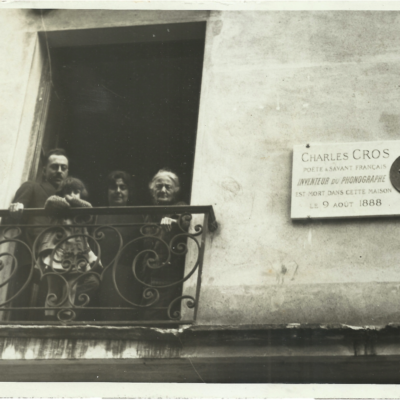
Figure 1. Plaque honouring Charles Cros at 5 rue de Tournon, Paris. Foto Consorcio, 31 May 1927. Courtesy of Norbert Gaulard.
In another recent article you have written, “De-acousmatization Deferred: Recorded Voices in Auguste de Villiers de l’Isle-Adam’s L’Ève future and Jules Verne’s Le Château des Carpathes” (forthcoming in the collection, Des Voix acousmates en littérature) you draw upon the work of Michel Chion, Brian Kane, Mladen Dolar and others, to formulate and forward the idea of the “literary acousmatic” – rich literary explorations “of the recorded voice and its imagined futures” – specifically in works from the period between 1877-1927. Can you tell us more about this concept of the “literary acousmatic”? Is it a generic category, or would you describe it as something else? What are the affordances and limits of reading fiction for their phonographic or other technological logics?
I think I’ve just scratched the surface of the literary acousmatic, and I’m eager to explore this concept further back in time. On the one hand, the invention of sound recording marked a clear rupture with the past, in that it became possible to separate the human voice from the moment of its original expression in both space and time. I was fascinated by the fact that, despite these two novels being the two earliest texts to feature the phonograph as a major narrative component, both novelists had already managed to produce such elaborate, imaginative representations of disembodied, recorded voice. Moreover, the use of phonographic playback as a narrative device perfectly illustrated many of the examples given by Chion in his theorization of acousmatic voice in film. On the other hand, as Brian Kane has shown in his detailed history of the “acousmatic” (Sound Unseen, 2014), many of these same effects of the hidden source would have also been felt in the pre-recording era when a source was present but invisible or obscured. While I have explored soundscapes, bells, music, and voice in the 19th-century novel, I have yet to focus exclusively on “acousmatic sound” in the pre-recording era literature, and I’ll be curious to see what I can find.
I understand that you now own a 1904 Edison phonograph and are collecting cylinders to play on it? How did you acquire this machine, and where are you finding your records? Would you be willing to “show and tell” us about this machine and the cylinders you have collected so far?
My husband managed to track down a beautiful machine and horn from an antique dealer in Michigan, and a different antique dealer drove it out here to Pennsylvania. There is a semi-annual antique faire, the “Mechanical Music Extravaganza,” up in Wayne, New Jersey that I started going to shortly after that, where I was able to add to my wax cylinder collection and pick up other recording paraphernalia such as needle tins. We have also checked out a few Antique Malls in rural Pennsylvania, but nothing compared to the collections and collectors who come to Wayne. Many of the antique dealers who attend are more interested in the mechanics of the different models than the history or contents of recorded sound, so cylinders are often just piled up on the floor waiting to be found.
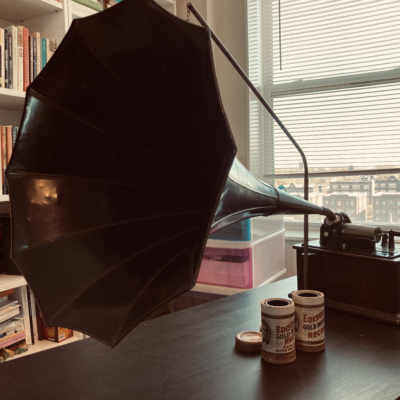 Figure 2. Cylinder Phonograph and Horn. Courtesy Renée Altergott.
Figure 2. Cylinder Phonograph and Horn. Courtesy Renée Altergott.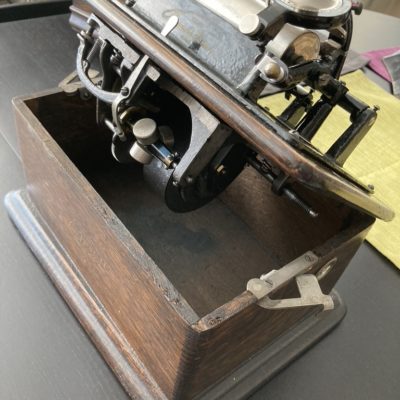 Figure 3. Inside Cylinder Phonograph. Courtesy of Renée Altergott.
Figure 3. Inside Cylinder Phonograph. Courtesy of Renée Altergott.I now have a variety of recordings – vocal and instrumental, Americana songs, marches, comedy sketches – and I am slowly building my own Finding Aid, cross-checking the numbers and titles against commercial catalogues and what has been digitized by UCSB. I did manage to find one or two cylinders in German, given our geographic location, but I have yet to acquire any French songs that are playable on the machine. I am very hesitant about ordering wax cylinders on antique sites, since it’s so risky for those to travel in the mail. The next time I’m back in Paris, I definitely plan to spend more time at the marchés aux puces and the dealer next to the Phonomuseum in Montmartre.
Is there a future sound and literature project you’re already thinking about, even as you complete work on your dissertation?
Yes, too many!
How have your listening habits changed over the past year (during this pandemic period)? What sounds have become important to you, and what have you been listening to more than usual?
I’ve mostly been staying put up in our apartment in West Philly, which is one of the tallest buildings in the area, so the most unrelenting sound we get is the wind howling in the courtyards. Just being able to take walks outside in the sun again is a major relief, and as a result of being shut in for so long, I have become much more attentive to the sounds I get to experience during these walks. One favorite recording I made this winter was of a neighbor’s wind chimes and melting snowfall from a big tree canopy stretching over the sidewalk. I also got a few musical instruments back out during the pandemic and experimented with making multi-track flute pieces.
Renée Altergott is currently completing a dissertation in French and Francophone Literature at Princeton University (USA). Her work examines the early history of the phonograph in France and the former French Colonial Empire, especially with regards to disembodied voice. Her articles on sound, voice, and technology have appeared or are forthcoming in Women in French Studies, French Forum, and Nineteenth-Century French Studies.
This article is published as part of the Listening, Sound, Agency Forum which presents profiles, interviews, and other materials featuring the research and interests of future participants in the 2021 SpokenWeb symposium. This series of articles provides a space for dialogical and multimedia exchange on topics from the fields of literature and sound studies, and serves as a prelude to the live conference.
